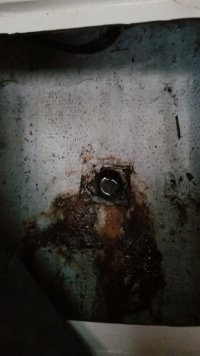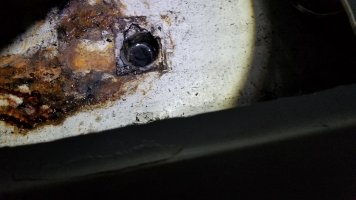Hello,
I bought a 1976 27ft Ericson couple of years ago. I recently noticed very slow water seepage up into the bilge closer to the head. At first I thought it might be seeping out from the keel boats but realized it is an enclosed keel. It appears it has been doing this for years as rust marks show where the water has been draining down into the deeper bilge in the keel to the rear of the boat but it hasn't really been a problem with filling up the bilge prematurely. Can anyone tell me what this hole might be and what is going on here and it is something to be concerned about. And if it is a concern what might be the best course of action for repair. A couple other longtime sailors that looked at it could not give me any advice.
Thank you,
I bought a 1976 27ft Ericson couple of years ago. I recently noticed very slow water seepage up into the bilge closer to the head. At first I thought it might be seeping out from the keel boats but realized it is an enclosed keel. It appears it has been doing this for years as rust marks show where the water has been draining down into the deeper bilge in the keel to the rear of the boat but it hasn't really been a problem with filling up the bilge prematurely. Can anyone tell me what this hole might be and what is going on here and it is something to be concerned about. And if it is a concern what might be the best course of action for repair. A couple other longtime sailors that looked at it could not give me any advice.
Thank you,



